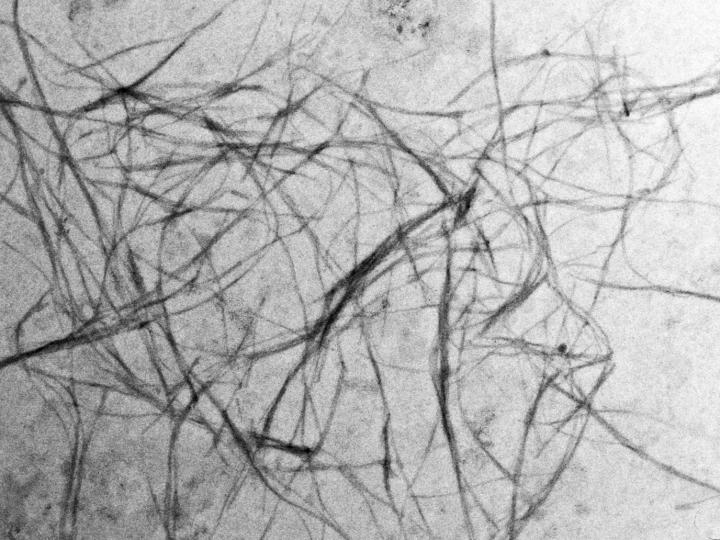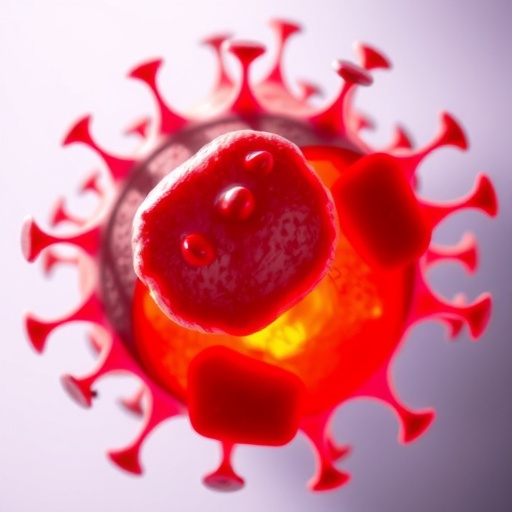
Credit: ETH Zurich / Juan Gerez
Aggregates of the protein alpha-synuclein in the nerve cells of the brain play a key role in Parkinson’s and other neurodegenerative diseases. These protein clumps can travel from nerve cell to nerve cell, causing the disease to progress. A team of researchers led by ETH scientists have now discovered how the body can rid itself of these damaging aggregates. Their findings might open up new approaches in the treatment of neurodegenerative diseases.
Relevant for these diseases are long but yet microscopic fibres, or fibrils, to which large numbers of the alpha-synuclein molecules can aggregate. Individual, non-aggregated alpha-synuclein molecules, however, are key to the functioning of a healthy brain, as this protein plays a key role in the release of the neurotransmitter dopamine in nerve cell synapses. When the protein aggregates into fibrils in a person’s nerve cells – before which it must first change its three-dimensional shape – it can no longer carry out its normal function. The fibrils are also toxic to the nerve cells. In turn, dopamine-producing cells die, leaving the brain undersupplied with dopamine, which leads to typical Parkinson’s clinical symptoms such as muscle tremors.
Breakdown mechanism deciphered
Using cell culture experiments, the researchers were able to show that it is the alpha-synuclein fibrils that can enter healthy cells and accumulate within these. “Once the fibrils enter a new cell, they ‘recruit’ other alpha-synuclein molecules there, which then change their shape and aggregate together. This is how the fibrils are thought to infect cells one by one and, over time, take over entire regions of the brain,” explains Paola Picotti, Professor of the Biology of Protein Networks at ETH Zurich. She conceived the study, published in the latest issue of the journal Science Translational Medicine, which was led by Juan Gerez, a former postdoc in her group.
The team of scientists from ETH Zurich, University Hospital Zurich and the University of California San Diego was also able to decipher a cellular mechanism that breaks down alpha-synuclein fibrils naturally. A protein complex called SCF detects the alpha-synuclein fibrils specifically and targets them to a known cellular breakdown mechanism. In this way, the spread of fibrils is blocked, as the researchers demonstrated in tests on mice: when the researchers switched off SCF’s function, the alpha-synuclein fibrils were no longer cleared up in the nerve cells. Instead, they accumulated in the cells and spread throughout the brain.
Stem cell or gene therapy
Picotti and Gerez see promising opportunities in how this SCF breakdown mechanism could be applied in therapy. “The more active the SCF complex, the more the alpha-synuclein fibrils are cleared, which could slow down or eventually stop the progression of such neurodegenerative diseases,” Gerez says. He goes on to explain that the SCF complex is very short-lived, dissipating within minutes. Therapeutic approaches would focus on stabilising the complex and increasing its ability to interact with alpha-synuclein fibrils. For example, drugs could be developed for this purpose.
Another approach to help Parkinson’s patients would be to transplant nerve stem cells into their brains, as Picotti says. Previous attempts haven’t been very successful, she explains, because the alpha-synuclein fibrils in the brain infected the healthy cells. “If we can manage to modify the stem cells in such a way that they either don’t let fibrils in or that they immediately break down any fibrils they do let in, this could progress stem cell therapy,” she concludes. Finally, gene therapy could be used to stabilise the SCF complex in nerve cells and thus increase its activity. “However, when it comes to potential therapies, we’re still right at the beginning,” Gerez says, “whether effective therapies can be developed is still unclear.”
###
Reference
Gerez et al.: A cullin-RING ubiquitin ligase targets exogenous alpha-synuclein and inhibits Lewy body-like pathology. Science Translational Medicine 2019: eaau6722, doi: 10.1126/scitranslmed.aau6722
Media Contact
Dr. Juan Gerez
[email protected]
Original Source
https:/
Related Journal Article
http://dx.




